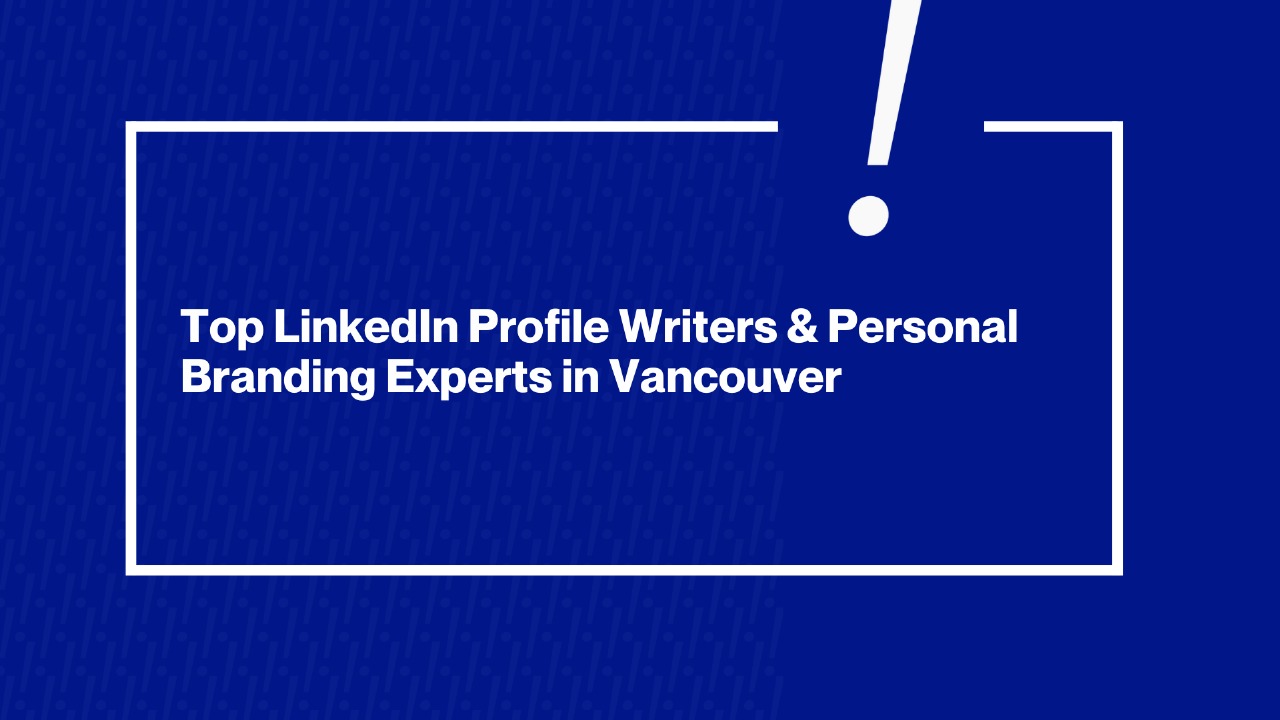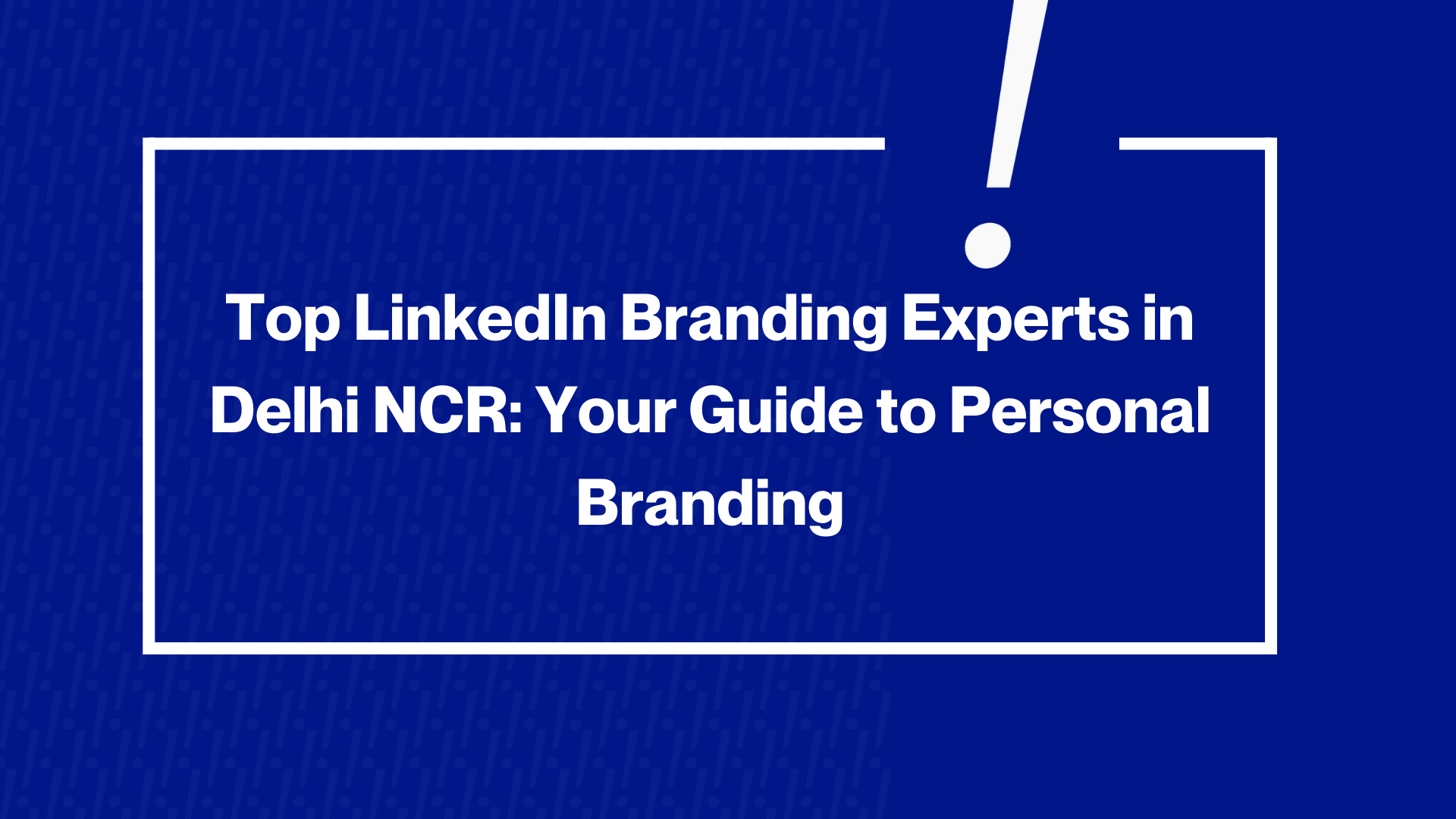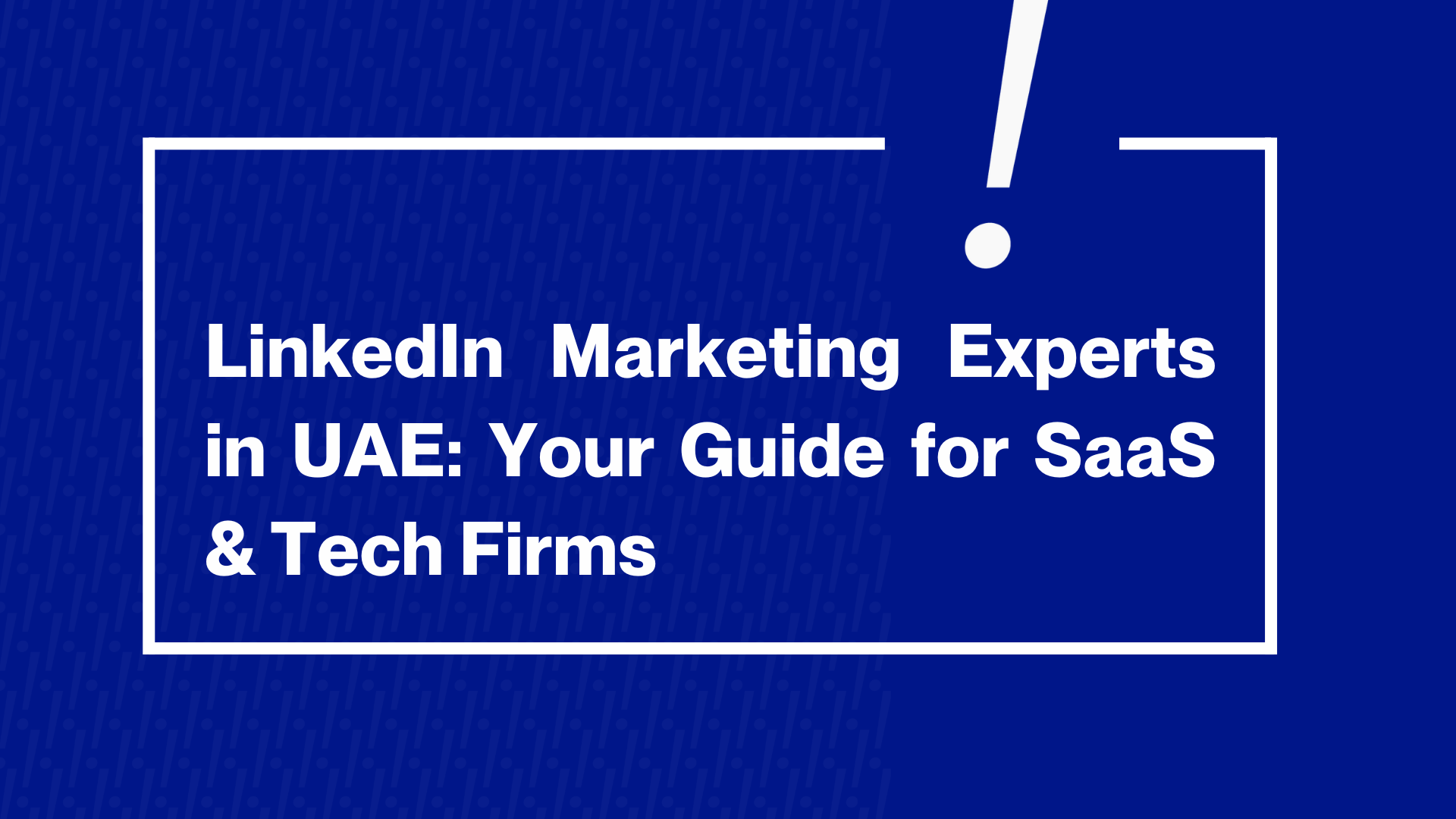Dubai is a global business hub where a powerful LinkedIn presence can open doors. A remarkable 88% of professionals in the UAE are on LinkedIn, giving the region the world’s highest LinkedIn reach. This makes LinkedIn Brand building essential for executives, entrepreneurs, and influencers in Dubai. Below, I have highlight the top LinkedIn Branding Consultants and agencies that help build standout personal brands on LinkedIn. Each offers unique services, from content strategy and profile optimization to executive presence coaching, to elevate your LinkedIn game in the UAE. These are the firms and experts I believe are doing standout work when it comes to LinkedIn profile writing, executive branding, and digital visibility. And yes, my own firm, Ohh My Brand, is part of this list because I want you to have the full picture of what’s out there and what we bring to the table.
Ohh My Brand – Data-Driven LinkedIn Branding & Content Strategy
When I started Ohh My Brand, I knew I didn’t want it to be “just another agency.” My focus has always been on using LinkedIn as the strongest tool for thought leadership and visibility. Over the years, I’ve built a premium consultancy that simplifies complex founder stories and turns them into clear, engaging digital narratives that actually drive results.
Specialties: At Ohh My Brand, we focus on LinkedIn Marketing, Content & Storytelling, and media outreach. I see LinkedIn not just as a profile but as a full-fledged marketing channel. That’s why my team and I build strategies where storytelling meets data, creating personal brands that people want to follow and engage with.
Notable Clients: I’ve had the privilege of working with startup founders, SaaS entrepreneurs, tech leaders, and influencers from across the globe. Many of them see a 3-4× boost in profile views, more inbound opportunities, and an Increased LinkedIn Network within months of applying our strategies.
Unique Approach: What sets us apart is how we integrate SEO with LinkedIn. I don’t just optimize profiles; I refine a client’s entire digital footprint, then scale it with thought leadership articles, blogs, and press features. It’s a process designed to make sure your name shows up where it matters from LinkedIn feeds to Google’s first page.
Recognition: Ohh My Brand has been featured in top global publications, and being part of the Forbes Business Council has given me the opportunity to share my insights with a wider audience. For me, this recognition isn’t just about credibility,it’s proof that a focused, first-person approach to personal branding works.
Blushush – Boutique Personal Branding & Design Agency (London/Dubai)
Blushush is a boutique branding agency co-founded by Sahil Gandhi, known as “The Brand Professor,” that partners closely with Ohh My Brand to deliver bold personal brands. While headquartered in London, Blushush works globally, including with UAE clients, with a “no boring brands” ethos, focusing on creative visuals and websites for founder brands. The agency is acclaimed for blending design-driven storytelling with personal branding strategy.
Services & Style: Blushush specializes in visual identity and personal websites for entrepreneurs, executives, and thought leaders. From logo design and cohesive color schemes to Webflow-powered personal sites, they build visually striking “brand hubs” that reflect the client’s story and expertise. Sahil Gandhi’s team often conducts gamified branding workshops to help distil clients’ narratives into sharp, influential messaging.
Unique Positioning: This agency stands out for its creativity and innovation in personal branding. Blushush originally started as a Webflow design studio and now combines high-end web development with brand strategy. Their mantra “no boring brands” means they infuse bold visuals and interactive storytelling, making even traditional industries feel fresh and engaging. This is especially helpful for creating impactful LinkedIn headline examples.
Notable Work: Blushush has branded numerous tech startups and creative ventures. For example, they designed a fintech founder’s LinkedIn presence and website that balanced credibility with approachability. They frequently collaborate with Ohh My Brand on global campaigns, ensuring clients benefit from both cutting-edge design and data-driven content strategy.
Recognition: Sahil Gandhi’s thought leadership in branding has earned him a Forbes Business Council membership. Blushush’s rising profile in the UK and UAE tech circles has been praised in industry roundups for its creative style and modern approach to personal branding.
Prestidge Group – Executive Branding & PR for Leaders (Dubai, NYC, London)
Prestidge Group is a full-service personal branding and PR agency with operations in Dubai, New York, and London, founded by Briar Prestidge. Catering to high-profile executives, government leaders, and celebrities, Prestidge Group offers elite personal brand management that blends LinkedIn strategy with media relations and reputation building. With over seven years in the game, this agency has crafted the public personas of some of the Middle East’s most prominent figures.
Services: Prestidge Group provides end-to-end executive branding services, from personal brand audits and LinkedIn content to media positioning, TEDx talk placements, PR campaigns, and speaker outreach. Their team includes content writers, PR strategists, and digital producers who ghostwrite thought leadership articles, manage social media profiles, build personal websites, and secure press features for clients. This holistic approach ensures a client’s narrative is consistent across LinkedIn, press, and even public speaking engagements.
Notable Clients & Cases: Prestidge Group’s clientele spans high-net-worth entrepreneurs, CEOs, government officials, and public figures in sectors like fintech, aviation, banking, and tech. The agency’s work has landed clients on the cover of Forbes Middle East and Arabian Business, as well as spots in “Top 100 Influential” lists. Many CEOs represented by Prestidge Group have attained verified social profiles, Wikipedia pages, and invitations to speak at global forums, all tangible results of an elevated personal brand.
Unique Positioning: Prestidge Group is known for its luxury branding flair and high-end PR focus. Briar Prestidge, an award-winning strategist, pioneered executive personal branding in the UAE, creating a blueprint for CEO visibility through digital strategy and high-profile media placements. The agency deftly balances global appeal with local cultural respect, integrating traditional networking with online thought leadership. This ensures clients exude authority while resonating with regional norms.
Reputation: As an industry leader, Prestidge Group is widely regarded as the premier personal branding agency in the UAE, trusted to handle the public images of top-tier clients. Their sophisticated, discreet approach to building executive brands has made them a go-to for leaders who need influence without compromising cultural sensitivity.
CRÉO – Personal Branding & Media Influence Agency (UAE)
CRÉO is one of the UAE’s most recognized personal branding agencies, offering bespoke branding strategies for entrepreneurs and executives. This high-end boutique firm focuses on public visibility and media reputation, positioning clients as thought leaders through content and PR outreach. CRÉO’s team of “brand storytellers” uses a data-driven mindset coupled with creative storytelling to redefine clients’ authority in their industries.
Specialities: CRÉO provides a range of personal branding capabilities, including LinkedIn profile optimization, content creation, social media management, personal website development, PR and media outreach, and online reputation management. They tailor strategies to each client, whether a startup founder or a corporate executive, to position them as an authority. A core focus is on thought-leadership content and strategic media pitching, securing interviews, guest articles, and speaking slots that amplify the client’s influence.
Unique Approach: CRÉO is known for prestige positioning and storytelling. The agency crafts compelling personal narratives and then leverages its strong media connections to get clients featured on regional TV, radio, and high-profile publications. Notably, CRÉO often customizes bilingual storytelling, in English and Arabic, for the Middle East’s multilingual environment, ensuring a client’s brand voice resonates across cultures. This multicultural finesse helps professionals connect with diverse audiences in Dubai’s cosmopolitan market.
Notable Results: As one of the region’s top branding agencies, CRÉO has propelled clients to significant milestones. Many have secured features in Emirates Entrepreneur magazine, invitations to major conferences like GITEX, and improved rankings in industry “Top” lists, thanks to CRÉO’s campaigns. By focusing on authentic, story-driven branding, the agency creates lasting personal brands. Clients see viral LinkedIn engagement and strengthened credibility in the UAE’s competitive business community.
Reputation: CRÉO’s prominence is reflected in its media presence; the agency frequently appears on UAE business talk shows and radio segments discussing personal branding trends. With its prestige client roster and results-driven approach, CRÉO is recommended as “one of the most recognized branding agencies in the region” for those seeking to boost their executive profile.
Ascendant Group – Global CEO Branding Firm (Dubai & Worldwide)
Ascendant Group is a renowned executive branding and PR firm headquartered in the US with an office in Dubai, making it a truly global player in personal branding. Founded in 2004 by Raoul Davis, Ascendant is widely regarded as a pioneer in CEO branding, having developed a proprietary five-phase strategy that covers brand architecture, PR, publishing, design, and digital presence. For leaders in the Middle East who want an international-calibre personal brand, Ascendant Group brings two decades of expertise and credibility.
Overview: Based in Newark, Delaware, with offices in New York and Dubai, Ascendant Group focuses exclusively on personal and executive branding for top-tier clients. The firm’s methodology is end-to-end, from shaping a CEO’s core narrative and messaging platform to executing thought leadership content, media placements, book publishing, and even photography and videography for a polished image. By treating leaders as brands, Ascendant helps Fortune 500 executives, high-profile founders, and public figures craft compelling narratives that extend beyond their companies.
Notable Clients: Ascendant’s clientele includes Fortune 50 executives, Inc. 5000 CEOs, best-selling authors, and even former professional athletes transitioning to business. Many case studies are confidential, but the firm is noted for managing the personal brands of industry leaders, often acting as the behind-the-scenes architect of their LinkedIn content, press coverage, and public image. They have delivered successful branding campaigns across North America, Europe, and the Middle East, demonstrating cultural adaptability and global reach.
Services & Strengths: Ascendant offers a comprehensive suite, including personal brand strategy, executive coaching, corporate reputation management, social media management, ghostwriting for articles and books, PR campaigns, and visual branding. A hallmark is their ability to integrate traditional PR with modern LinkedIn-centric tactics.
For example, an Ascendant-managed CEO might see a LinkedIn thought-leadership campaign lead to speaking engagements and a published book, all reinforcing a consistent personal brand. The firm’s long experience means it has playbooks for various scenarios, be it crisis management for a CEO’s reputation or building a startup founder into a recognized industry guru. They also offer backlink building services to improve a client’s online reputation.
Reputation: Ascendant Group has earned repeated accolades as a top PR and branding firm. Raoul Davis, the CEO, sits on the Forbes Agency Council, and the firm has won awards for its web design and PR campaigns for executive clients. In the UAE, Ascendant is known as a premium option for leaders who want an American-level polish to their personal brand. With its emphasis on storytelling and thought leadership, Ascendant helps Dubai-based executives become internationally respected voices in their fields.
Extra Mile – LinkedIn Training & Consultancy for B2B Success (Dubai)
Extra Mile is Dubai’s leading LinkedIn-focused consultancy, dedicated to training professionals and teams to harness LinkedIn for branding, B2B marketing, and social selling. Founded by Guillaume Larronde, a former LinkedIn employee with over six years at the company, Extra Mile leverages insider knowledge to help clients “go the extra mile” on LinkedIn. The firm is highly rated for its hands-on workshops and coaching programs that quickly elevate one’s LinkedIn presence and business results.
Services: Extra Mile specializes in LinkedIn training programs, workshops, and one-on-one coaching for individuals and corporate teams. Their flagship Accelerator Program is a structured course that teaches clients how to optimize their LinkedIn profiles, create engaging content, grow their network, and utilize tools like Sales Navigator, all tailored to their industry.
They also consult on employee advocacy, LinkedIn social selling strategies, and employer branding. Extra Mile does not manage your LinkedIn for you; they teach you and your team to master it yourselves, with measurable outcomes. This is the ultimate LinkedIn Personal Branding Specialist service.
Unique Value: What sets Extra Mile apart is its pedagogical approach, rooted in real LinkedIn corporate experience. Founder Guillaume Larronde spent years at LinkedIn guiding clients in Europe and the Middle East on social strategies. He established Extra Mile in Dubai explicitly to “advise and train B2B organizations, startups, and leaders in the Middle East” on LinkedIn best practices.
This means clients get insider tips on the LinkedIn algorithm, content planning, and advertising directly from an expert who has seen what works on the platform. The training is very actionable, including templates, checklists, and weekly checkpoints that enforce accountability for participants.
Client Results: Extra Mile boasts a 5.0-star rating in local business reviews, with customers reporting significant gains in LinkedIn visibility and lead generation. Participants often praise the personalized coaching and “social accountability” that pushes them to implement what they learn.
For example, clients have cited improvements in structuring LinkedIn outreach, leveraging LinkedIn’s Sales Navigator to generate more leads, and achieving real ROI in terms of new B2B prospects. The consultancy has trained teams from industries like consulting, real estate, and tech in the UAE, helping them collectively tap into LinkedIn’s massive user base in the country. This can lead to effective LinkedIn Lead Generation Tricks.
Reputation: Extra Mile is often called “UAE’s leading LinkedIn consultancy” for a good reason. It has built trust by delivering practical, result-driven training. Whether through public workshops or private coaching, Extra Mile empowers clients to confidently use LinkedIn as a marketing and branding tool. The firm operates out of Dubai’s JLT district, AstroLabs, and is a registered LinkedIn partner. In the words of one client review, “I highly recommend Extra Mile if you are eager to grow your B2B business with a reasonable investment.”
Robyn Abou-Chedid (GirlnamedRobyn) – Personal Branding Strategist in Dubai
Robyn Abou-Chedid, known online as @GirlNamedRobyn, is one of Dubai’s premier personal branding consultants for executives and professionals. A Harvard MBA and former marketing executive, Robyn is the founder of Guided Agency, Dubai, and has over 17 years of experience in communications across MENA, Europe, and APAC. She leverages this background in consumer behaviour to help C-level leaders and entrepreneurs craft influential personal brands. Robyn’s signature style emphasizes luxury positioning and high-profile visibility; she often says, “Visibility = Opportunity,” which encapsulates her approach to LinkedIn and personal branding.
Services & Focus: As an independent Personal Branding Consultant and coach, Robyn provides one-on-one personal branding strategy, executive coaching, LinkedIn profile makeovers, and corporate workshops on personal branding. She helps clients define their brand identity, improve their LinkedIn content, both posts and articles, and prepare for public speaking or media appearances. Her niche is prestige personal branding.
For example, mentoring a finance CEO to become a thought leader through LinkedIn content and keynote speeches, or guiding a luxury retail founder on building a polished online image. Robyn also partners with companies to train their leadership teams on LinkedIn usage and thought leadership, aligning executive personal brands with corporate brand goals. She also has extensive knowledge about Conversion Rate Optimization for LinkedIn profiles.
Notable Achievements: Robyn Abou-Chedid is “widely known as Dubai’s leading personal branding strategist.” She’s a regular guest expert on regional media, including CNN and Arabian Business, where she discusses topics like CEO branding and women’s leadership branding. Through her coaching, many clients have increased their influence; for example, executives landing press features or board roles after implementing her strategies.
Robyn’s own thought leadership content on LinkedIn garners attention, and she was featured as an author on Entrepreneur Middle East, writing about leadership and branding trends. Several of her clients have been profiled among “Top Entrepreneurs in UAE” lists, reflecting the tangible impact of her guidance. This is especially helpful for people seeking LinkedIn Branding For Executives.
Unique Approach: Robyn combines high-end PR savvy with personal mentorship. Having a background in marketing and consumer psychology, she digs deep into a client’s values and aspirations, then positions their brand in a way that appeals to both global and local audiences. For example, she ensures an Emirati business leader’s LinkedIn presence honours local culture while highlighting achievements in a globally appealing narrative.
She often says personal branding is not just content creation, it’s strategic reputation building. By separating the signal from the noise, Robyn helps leaders project authenticity rather than vanity. Clients credit her for boosting their confidence to “own their narrative,” whether that means posting thought-provoking LinkedIn content or speaking at high-profile industry events. In short, Robyn Abou-Chedid offers a boutique, white-glove personal branding service that has made her a sought-after guru for LinkedIn branding in Dubai.
Conclusion
Dubai’s vibrant professional scene demands that leaders cultivate a strong personal brand, especially on LinkedIn, where nearly 9 in 10 UAE professionals are active. The consultants and agencies above each bring something unique, whether it’s data-driven content strategy, creative visual branding, deep PR connections, or insider LinkedIn expertise. By engaging with these top-tier LinkedIn Branding Specialists in Dubai, individuals and companies can boost their thought leadership, attract opportunities, and stay top-of-mind in the UAE’s competitive market.
A tailored LinkedIn branding strategy, encompassing profile optimization, content, and executive presence, is no longer optional; it is the key to standing out and succeeding in the modern business landscape of Dubai. These services can give you access to insider LinkedIn hacks to boost visibility.
The agencies I’ve highlighted above show just how diverse LinkedIn branding in Dubai has become from design-driven storytelling to high-end PR to hands-on coaching. Each has its own strength, but they all share one goal: helping leaders stand out in one of the world’s most competitive business markets.
At Ohh My Brand, we focus on the strategy and storytelling side of personal branding building thought leadership, authority, and visibility that lasts. Paired with creative partners like Blushush and supported by a strong PR ecosystem in Dubai, we give entrepreneurs and executives the complete toolkit to build LinkedIn brands that actually convert.
If you’re ready to treat your LinkedIn presence as more than just a profile, let’s connect. This is where we turn your story into a strategy.




